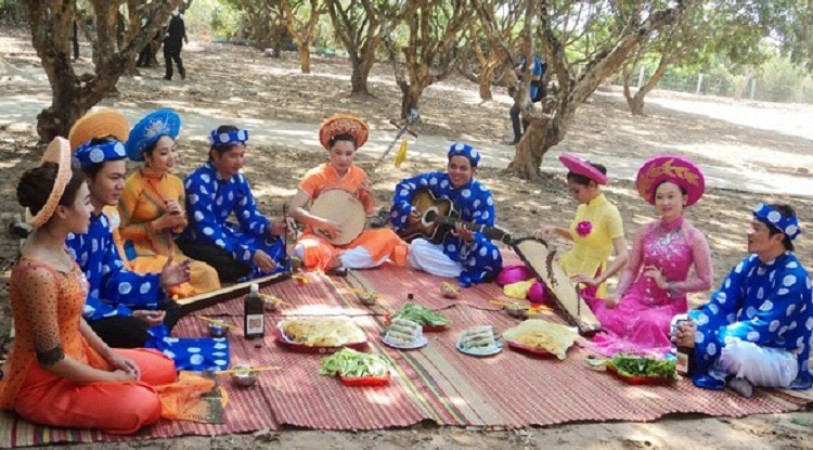
On December 5, 2013, a significant cultural milestone was achieved as UNESCO bestowed its prestigious recognition upon the Vietnamese art form known as Đờn Ca Tài Tử, declaring it an Intangible Cultural Heritage of Humanity. This acknowledgment by UNESCO underscored the immense cultural significance and heritage embedded within this traditional Vietnamese performing art.
Đờn Ca Tài Tử has deep roots that trace back to the late 19th century, carrying within its melodies and performances a rich history and cultural legacy. Originating from the ceremonial and musical practices of the Hue Royal Court, this art form is deeply intertwined with the traditions and customs of Vietnam.
At its core, Đờn Ca Tài Tử is characterized by a harmonious blend of music, poetry, singing, and storytelling, showcasing the collective talents of musicians, singers, and performers. Its distinctiveness lies in the synergy between various musical instruments such as the đàn tranh (16-string zither), đàn nguyệt (moon-shaped lute), đàn bầu (monochord), flute, percussion, and traditional vocals.
The performances of Đờn Ca Tài Tử are not merely musical presentations; they embody the cultural identity, values, and aspirations of the Vietnamese people. Through its melodies and lyrics, this art form often encapsulates tales of love, patriotism, rural life, and historical legends, connecting generations and preserving the collective memory of the community.
The recognition by UNESCO as an Intangible Cultural Heritage of Humanity signifies the efforts made by Vietnam to safeguard and promote this art form. This acknowledgment also brings global attention to the importance of preserving and cherishing traditional art forms, recognizing their role in fostering cultural diversity and promoting mutual understanding among different societies.
In Vietnam, efforts have been underway to safeguard and transmit the knowledge and skills associated with Đờn Ca Tài Tử to younger generations. Various initiatives, including educational programs, festivals, and cultural events, aim to ensure the continuity of this cherished art form.
Moreover, this UNESCO recognition has contributed to raising awareness internationally about the richness of Vietnamese cultural heritage, encouraging dialogue and exchanges between different cultures, and fostering mutual respect and appreciation for diverse forms of expression.
The acknowledgment of Đờn Ca Tài Tử as an Intangible Cultural Heritage of Humanity by UNESCO serves as a testament to its enduring significance, not only for Vietnam but also for the global cultural tapestry. It stands as a testament to the resilience and importance of preserving traditional art forms, ensuring that their beauty and heritage continue to resonate and enrich societies for generations to come.